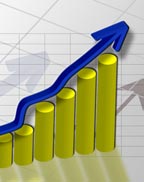
MONDAY, Jan. 7 (HealthDay News) — Health care spending grew nearly 4 percent in 2011, reaching $2.7 trillion — a new high, according to a federal government report issued Monday.
Although this seems like a huge amount of money, the rise actually represents the third consecutive year of “relatively slow growth,” the researchers said. Whether spending will pick up again as the economy improves, as it has in the past, isn’t known, they added.
“The stable growth in national health spending in 2011 is the result of mixed trends,” Micah Hartman, a statistician in the Office of the Actuary at the Centers for Medicare and Medicaid Services, said during a Monday afternoon press conference.
These trends include slowed growth (compared to years past) in expenditures for health insurance, government-funded research and funding for public health, Hartman said.
Those slowdowns, however, were “offset by faster growth in personal health care goods and services,” Hartman noted. “The main drivers of the spending trends were Medicare, private health insurance and consumer out-of-pocket payments,” he said.
Health care reform has had little effect on spending numbers so far, the researchers said. Although some provisions of the Obama Administration’s Affordable Care Act were in place in 2011, their effect on spending was minimal, Hartman said. It won’t be until 2014 and beyond that the full benefits of the law will be seen, he said.
The report, which is issued annually, was published in the January issue of the journal Health Affairs.
Among other findings in the report:
- Health care spending as a part of the country’s gross domestic product (GDP) has remained steady at 17.9 percent from 2009 to 2011.
- Americans’ personal health care spending increased briskly — from 3.7 percent in 2010 to 4.1 percent in 2011 — in part due to higher prescription-drug prices and higher costs for doctor and clinical services, the researchers found. Personal health care includes all goods and services used to treat diseases in individual people, and excludes expenditures such as government administration and the net cost of health insurance.
- Cost of doctor and clinical services jumped 4.3 percent in 2011, compared to about 3 percent in 2010, Hartman said.
- Spending on prescription drugs increased 2.9 percent in 2011, a big rise compared to the historically low annual increase of 0.4 percent in 2010. This growth is due primarily to the rise in brand-name prescribing and the introduction of new drugs.
The steep growth in drug costs, however, “was partly offset by slower growth for hospital services,” Hartman said. Spending for these services was slowed by 4.2 percent, due to cuts in Medicaid and hospital use, he said.
And although the growth in spending for Medicaid slowed in 2011, spending for Medicare, private insurance and out-of-pocket costs sped up, the researchers noted.
“Medicare spending grew 6.2 percent in 2011, accelerating the growth from 4.3 percent in 2010,” Hartman said. The growth was largely due to one-time spending for skilled nursing facilities, he said.
Medicaid spending increased 2.5 percent in 2011, down from 5.9 percent in 2010. The slower growth was due to states spending less on the program as matching federal grants ran out, Hartman noted.
Private insurance costs also grew as some 1 million more people enrolled. Most of these new members were children of current policy-holders recently covered by the Affordable Care Act, he said.
Out-of-pocket spending for health care among consumers grew 2.8 percent in 2011, accelerating from 2.1 percent growth in 2010, Hartman said.
As for the future, the researchers said they are concerned that spending on health care will only gain speed as the U.S. economy rebounds, something that has happened after past recessions.
More information
For more information on health care costs, visit the Kaiser Family Foundation.

